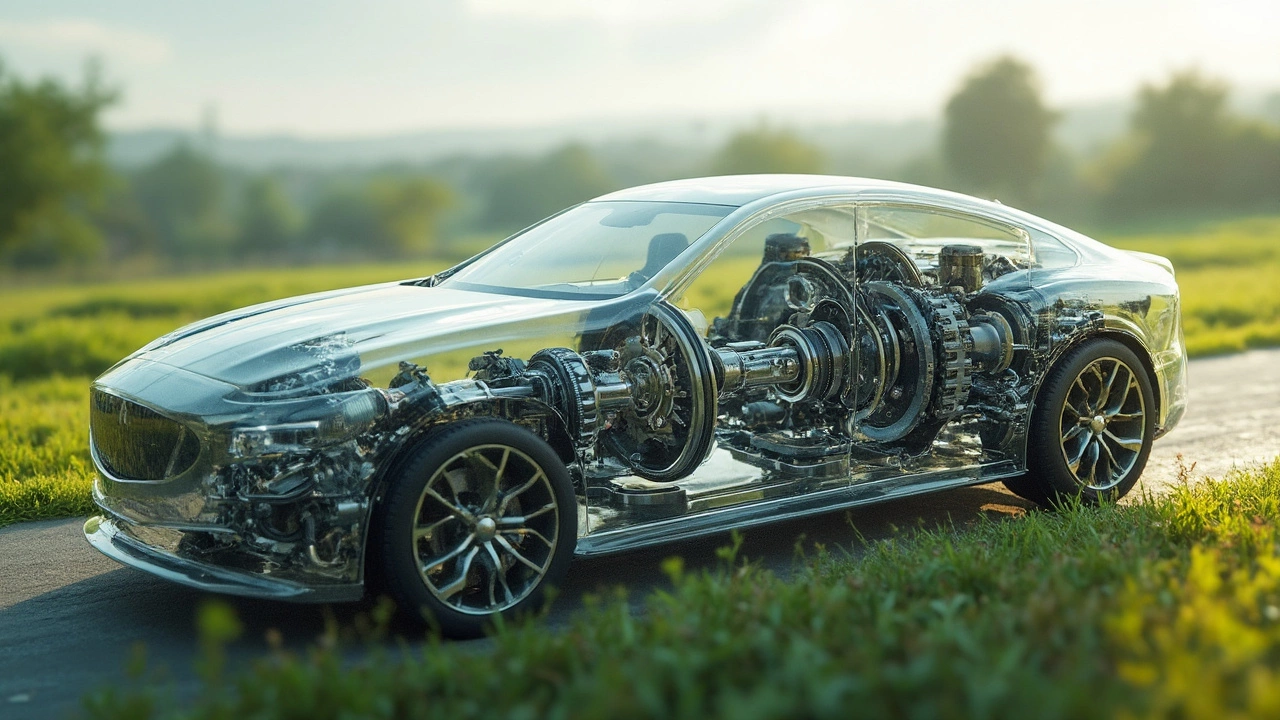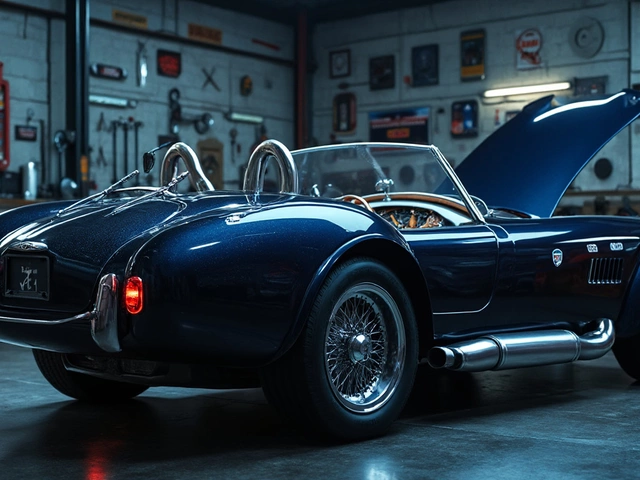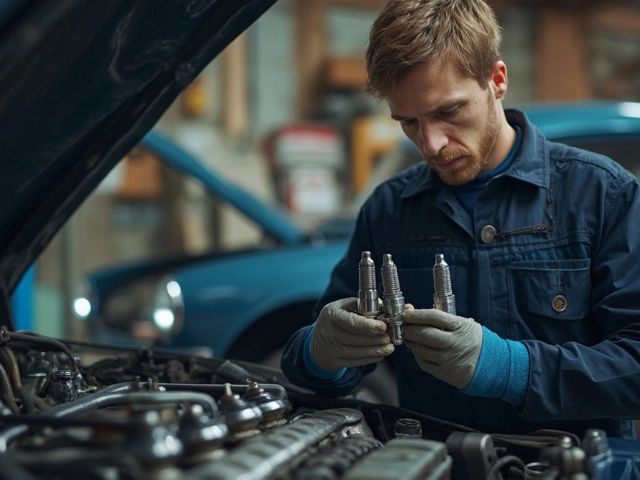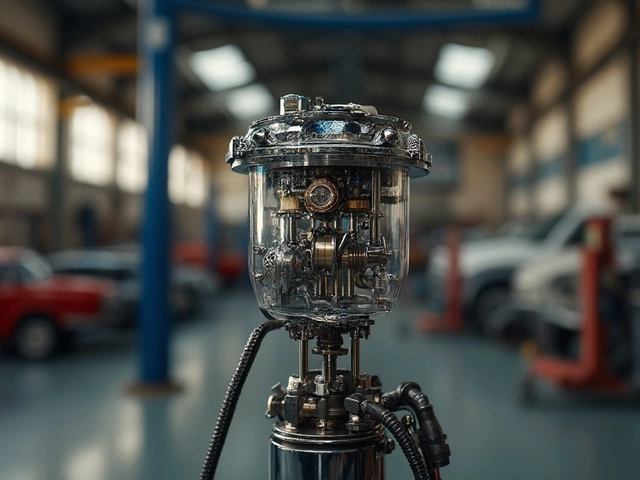So, your car’s clutch feels a bit funky, and you’re thinking about tackling it yourself. Or maybe you just want to know what all goes into this crucial piece of your ride. Let's break it down in the simplest way possible because, really, who needs extra complexity when we're talking car parts?
First off, the star of our show: the clutch disc. This is the part that eventually wears out and causes that notorious slipping sensation when they're on their last legs. It’s sandwiched between the engine and transmission and plays a big role in making gear shifts smooth. It's got a friction surface that needs to be just right.
- Understanding the Clutch Disc
- The Role of the Pressure Plate
- Importance of the Release Bearing
- Additional Components You Might Find
Understanding the Clutch Disc
Alright, so let's dive into the nitty-gritty of the clutch disc. Think of it as the unsung hero inside your car's clutch system. When you press down on that clutch pedal, this is the part that helps disconnect the engine from the wheels, allowing you to change gears smoothly. Pretty neat, right?
The clutch disc is packed with friction material, similar to brake pads, allowing it to grab onto the flywheel tightly when engaged. Over time, this material wears down, which is why you might notice slipping or difficulty in gear engagement. If you've been noticing this, it might be time to swap out your old disc for a new one.
Here's an easy way to understand its function: Picture two spinning records. The clutch disc acts like the record needle, engaging and disengaging to control the speed. Simple as that, yet so crucial for the whole operation.
Now, the size and design of a clutch disc can vary based on the vehicle's make and model. More powerful cars generally have bigger, beefier discs to handle the extra oomph. Not all discs are created equal, so when you're on the hunt for a clutch kit, check if the size and specs match your vehicle.
Another little-known fact: In some performance vehicles, you might find what's known as a "puck" or "button" style disc. These are designed for heavy-duty use, offering more durability and grip, especially in racing situations. But for most of us just cruising around town, the standard full-faced disc works just fine.
Here's a quick reminder: If you're getting a full clutch kit, it'll include not just the clutch disc, but also other essential parts like the pressure plate. Don't just replace the disc; ensure the whole system is in tip-top shape for the best performance.
The Role of the Pressure Plate
Alright, let’s talk about the pressure plate. It might not get all the glory, but it’s a real workhorse in your car’s clutch system. Think of it as the part that keeps everything tight and running smoothly. It holds the clutch disc against the flywheel—basically, it's what keeps your gears engaged when you're driving.
When you press the clutch pedal, you're releasing the pressure plate, which lets go of the clutch disc, stopping power from going from the engine to the wheels. This is what lets you change gears without a car meltdown. If the pressure plate isn’t doing its job, you're going to have trouble shifting, which no one wants.
Pressure plates are usually made of heavy-duty material since they need to withstand a lot of heat and force. These bad boys are engineered to endure the extreme stress that comes from lots of stopping and going, especially in traffic.
The pressure plate setup generally includes a diaphragm spring (a kind of spring-loaded wedge) which does the pressing magic, and the cover, which holds everything in place attached to the flywheel. If you’re ever replacing your clutch kit, changing out the pressure plate is a no-brainer to keep your car glide through gears.
Sometimes people overlook this part when troubleshooting clutch issues, but a dodgy pressure plate can lead to symptoms like a shaky pedal feel or even dreaded clutch slippage. So yeah, it carries a good chunk of responsibility in your clutch system.

Importance of the Release Bearing
Alright, let's talk about the release bearing, or as some folks might call it, the clutch release bearing. It might be a little part, but don’t let its size fool you—this guy's got a big job to do in the whole clutch operation.
The release bearing is what allows you to smoothly disengage the clutch when you press the pedal. When you hit that clutch pedal, the release bearing pushes against the release fingers of the pressure plate, which in turn lets the clutch disc spin freely from the engine. If this process isn't smooth, you're looking at jerks and shakes every time you change gears. Not fun, right?
Now, here's why it's crucial. Imagine you’re out for a Sunday drive, soaking up the sun. Everything's swell until suddenly, it gets harder to press the clutch pedal down, or worse, you hear odd noises when you shift. These are red flags telling you the release bearing might be worn out. Letting it go unchecked could lead to complete clutch failure or severe transmission problems, which, let's face it, no one wants to deal with.
When you're looking at a complete clutch kit, a new release bearing is usually part of the package. This is because when replacing a clutch, you wouldn't want to risk reusing an old bearing and have it fail soon after. It's kind of like changing the batteries while you're at it – might as well do it all, so you know everything's fresh and ready to go.
In conclusion, this little piece really matters, helping to ensure your vehicle's longevity and smooth operation. Keep it in good shape, and your drive will be as sweet as ever.
Additional Components You Might Find
When diving into a complete clutch kit, you'll notice it packs more than just the basics. Besides the major components we've already talked about, there are a few other goodies included that might surprise you. Let's unpack these extras and see why they're just as important in keeping your car's clutch system running smoothly.
One lesser-known component is the pilot bushing or bearing. This small, yet mighty part provides crucial support to the input shaft of the transmission. It helps the shaft stay aligned, ensuring everything meshes together nicely. If this goes bad, you'll probably start hearing some weird noises when you're driving, so keeping it in good shape is key.
The clutch alignment tool is another handy addition. This tool isn't something you'd keep in your garage on a regular day, but it makes your life way easier when you're installing the new clutch. It helps line up the clutch disc with the flywheel, making sure everything fits perfectly, reducing the headaches during installation.
Sometimes, you might find bolts or fasteners that are part of the kit. Why are they important? Well, using the right bolts ensures that all parts are secured properly, reducing the risk of parts loosening over time. It's these little details that can make or break your clutch replacement job.
Lastly, some kits come with lubricant or grease. This isn't just any grease; it's specially formulated to work well with clutch components, minimizing friction where needed and ensuring a long life for your clutch system. Use it wisely as per the instructions, and you’ll be golden!
Here's a quick overview in table form for easy reference:
| Component | Function |
|---|---|
| Pilot Bushing/Bearing | Supports and aligns the transmission input shaft |
| Clutch Alignment Tool | Ensures proper fitting of the clutch disc during installation |
| Bolts/Fasteners | Secures clutch components, preventing loosening |
| Lubricant | Reduces friction and enhances component longevity |
So, the next time you're checking out a clutch kit, remember it's not just about the big stuff. These additional components play their own vital roles, making sure everything works just right.






